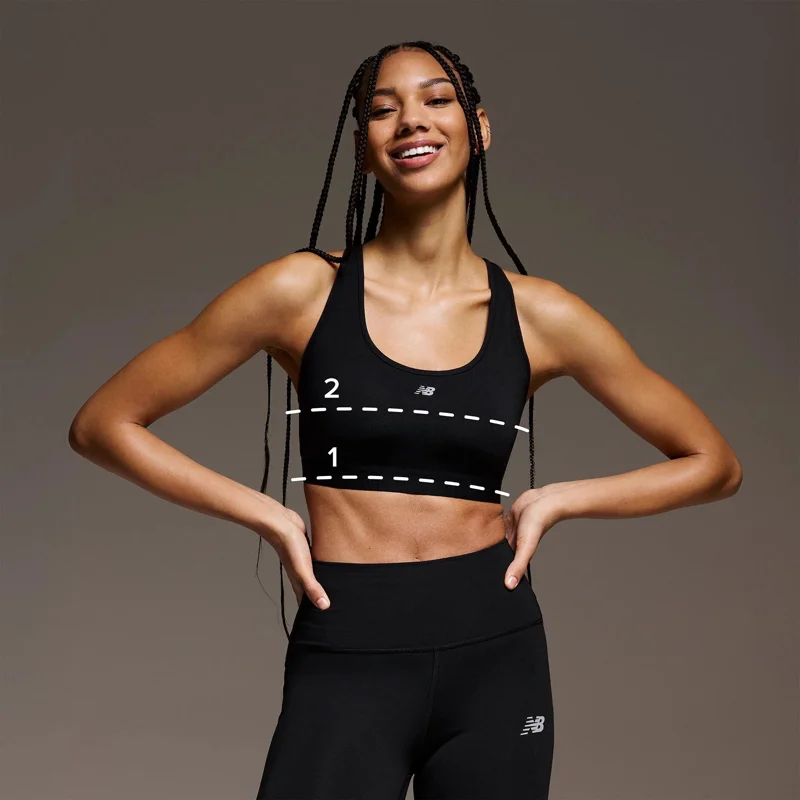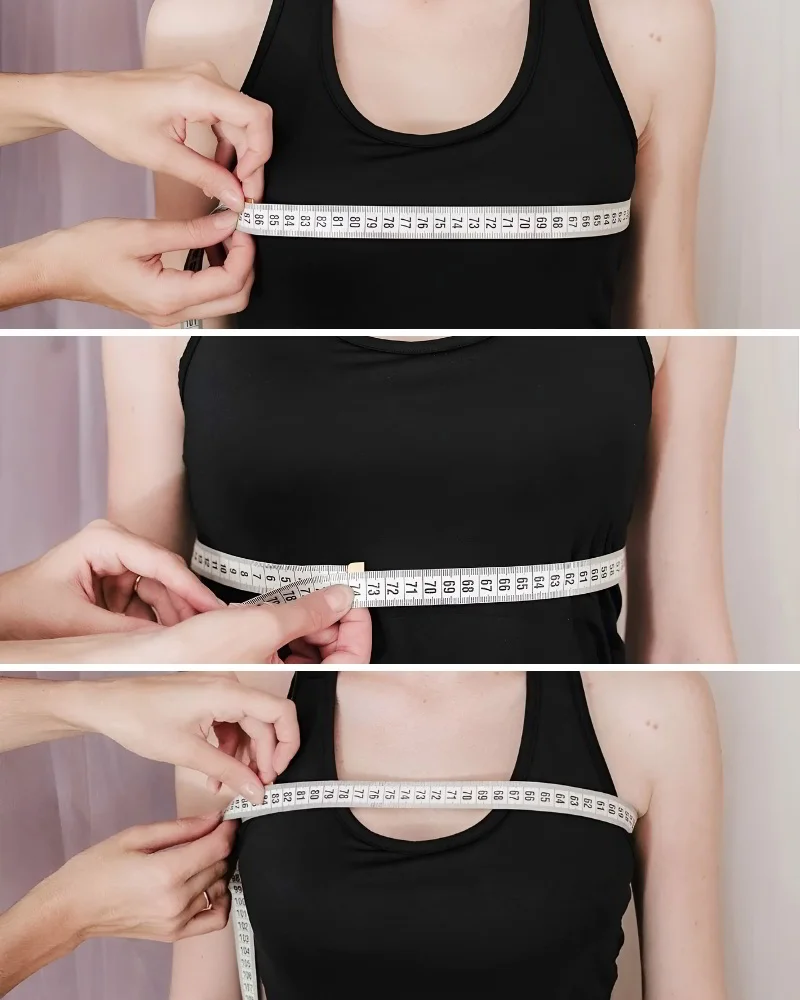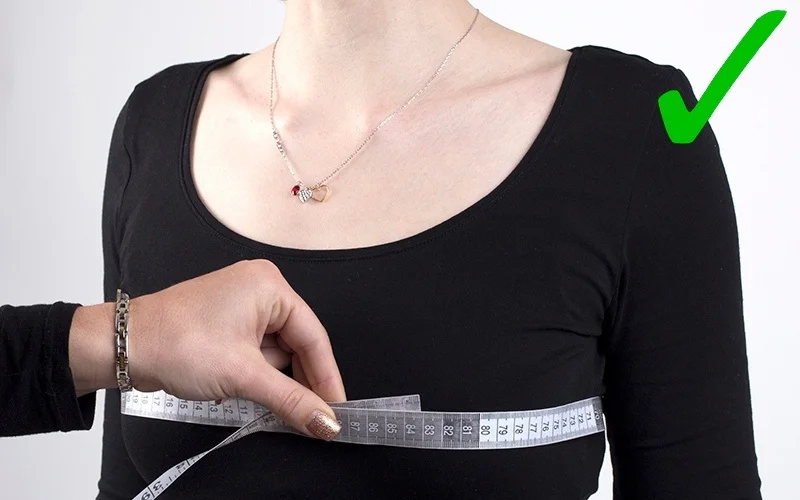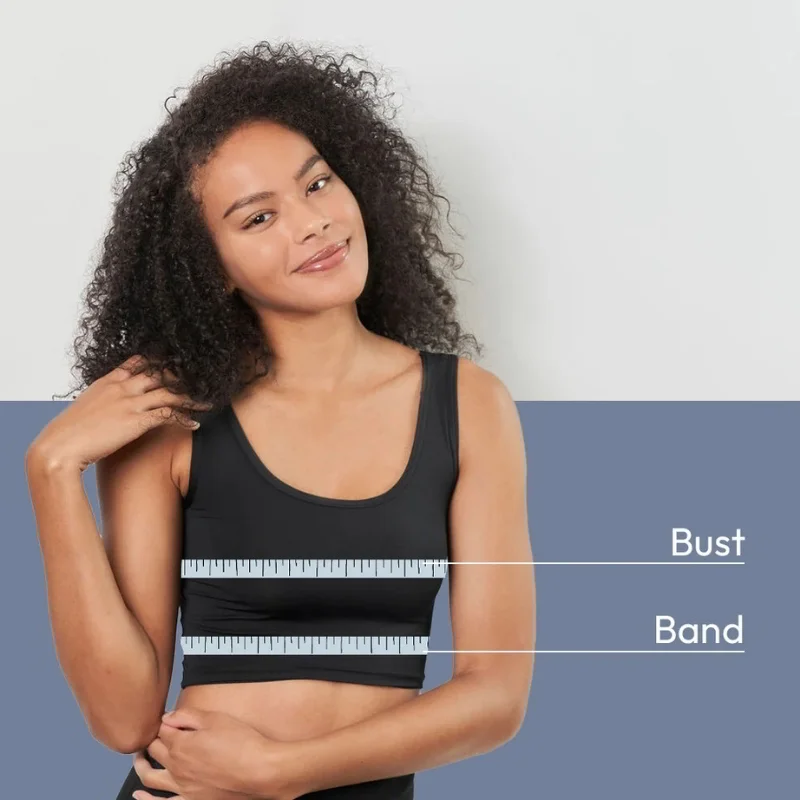Accurate Bust Measurement: Key for Apparel Businesses
Understanding key body measurements is fundamental for any apparel business aiming for success. For clothing businesses focused on womenswear, the bust measurement is particularly critical. Inaccurate measurements often lead to sizing inconsistency, poor garment fit, frustrated customers, and costly returns.
These issues can significantly impact a growing brand’s reputation and bottom line. This article provides expert guidance specifically for apparel business owners and teams. The goal is to clarify exactly what the bust measurement entails in a fashion context, demonstrate how to obtain an accurate reading, and underscore its importance.
1. Defining “bust” specifically for fashion and apparel sizing
1.1 The core definition
The bust definition specific to women’s apparel refers to the circumference measurement taken horizontally around the absolute fullest part of a woman’s chest or breasts. This point is typically across the nipples, but anatomical variations mean focusing on the maximum circumference is key. This dimension is foundational for designing and sizing tops, dresses, jackets, and other upper-body garments for women.

1.2 Why this specific meaning matters
While standard dictionary definitions might list “bust” as a type of sculpture or even slang terms like ‘to break’ or ‘arrest’ (actions), relying on these broader meanings can cause significant confusion within the apparel and fashion industry. Clarity is essential.
Using the precise apparel meaning ensures accurate technical specifications communicated to manufacturers and avoids misinterpretations in pattern drafting or customer feedback, maintaining a professional business context.
1.3 Bust vs. general chest measurement
Although “chest” can sometimes be used informally, “bust” is the standard and more precise term within the apparel industry for this specific measurement on the female anatomy, especially for women’s sizing. “Chest measurement” might refer to a general torso dimension, a measurement taken on a flat garment (common in menswear), or sometimes the overbust area. Using “bust” eliminates ambiguity and ensures accuracy when developing garment sizing.
2.1 Understanding underbust
The underbust measurement is the circumference taken around the torso directly beneath the breasts, encircling the rib cage. Its primary function is determining the correct bra band size. However, this measurement is also relevant for achieving the proper fit for garments with an empire waistline or any design requiring a close fit just below the bust area.
2.2 Understanding overbust
The overbust measurement is the circumference taken around the upper chest, positioned above the fullest part of the bust and typically running just under the armpits. This dimension is crucial for fitting strapless garments, informing pattern making adjustments around the shoulder and armhole areas, and achieving a snug fit in design elements intended to sit high on the chest.
2.3 The importance of differentiation
Correctly identifying and using these three distinct body measurements – bust, underbust, and overbust – is vital. Confusing them leads directly to significant errors in clothing fit, bra sizing calculations, and overall garment construction. Achieving professional results hinges on precision; knowing the exact point to measure for each specific dimension prevents costly mistakes and ensures garments fit as intended.

3. How to accurately measure bust size: An expert step-by-step guide
3.1 The essential tool
To accurately measure bust size, a flexible tailor’s tape measure made of cloth or pliable plastic is essential. Ensure the tape is non-stretch and lies flat without kinks. Avoid using rigid metal measuring tapes, as they cannot conform properly to body contours.
3.2 Preparation is key
Achieving a reliable measurement technique requires proper preparation for consistency:
- The person being measured should stand straight and relaxed, with arms hanging comfortably at their sides.
- Measurements are most accurate over bare skin or a thin, non-padded bra that doesn’t compress or significantly alter the natural shape. Avoid bulky clothing.
- Ensure the person breathes normally and doesn’t hold their breath.
3.3 The correct procedure
- Wrapping the tape: Gently wrap the tape measure around the back, bringing the ends to the front. Position the tape horizontally across the absolute fullest part of the bust. This often aligns with nipple height, but always defer to the point of maximum circumference.
- Keeping the tape measure horizontal: This is critical. Ensure the tape measure is completely horizontal and parallel to the floor all the way around the body. Check in a mirror or have someone assist to confirm the tape hasn’t dipped down or angled upwards at the back. Maintain a level line.
- Ensuring the tape is snug: The tape should be held snug against the body, making contact all around without any slack. However, it must not be pulled so tight that it digs into the skin or compresses the breast tissue. The goal is to capture the natural circumference without constriction.

3.4 Recording the measurement
Following the correct body measurement technique, note the number where the tape measure’s starting end meets the rest of the tape. Record the measurement clearly in either inches or centimeters, depending on your standard units used in size charts and tech packs. For greater precision, consider rounding to the nearest common fraction (like 1/4 inch) or millimeter if your specifications require it.
4. Why accurate bust measurements are crucial for your clothing business
4.1 Foundation for proper garment fit
Accurate bust measurements are foundational because the bust is often the widest point determining how upper body garments drape. Getting this measurement right is the first step towards ensuring proper garment fit, wearer comfort, achieving the intended silhouette, and ultimately, customer satisfaction. For clothing businesses, this is non-negotiable for quality.

4.2 Developing reliable size charts
The bust measurement is a core data point used to define each size within a brand’s size charts. Accuracy and consistent sizing in defining these body measurements for different clothing sizes translate directly into a size chart that customers can trust, reducing hesitation and uncertainty during purchase.
4.3 Informing pattern making and tech packs
Pattern making relies heavily on accurate body measurements, including the bust. These precise specifications must be clearly documented in tech packs sent to manufacturers. This ensures the intended dimensions and fit are consistently achieved across entire production runs, minimizing variations and errors.
4.4 Accurate label & tag information
While most brands use standard sizing (S, M, L) on basic labels and tags, some include specific body measurement ranges. If providing a bust size range on tag information, accuracy is paramount. Misleading information here can directly result in a poor customer experience and returns.
4.5 Reducing costly returns due to sizing issues
One of the most direct consequences of inaccurate bust measurement leading to poor fit is an increase in product returns. Sizing issues like these can significantly impact businesses financially, including shipping fees, restocking labor, and potentially lost inventory. Viewing accurate measurement as a preventative measure protects profit margins.
4.6 Building customer trust and brand reputation
Ultimately, providing consistent sizing based on accurate measurements builds customer trust. When customers know a brand’s clothing size specification reliably fits their body, they gain confidence, leading to increased loyalty, more repeat buyers, and positive word-of-mouth. This contributes significantly to a strong brand reputation.
5. Integrating bust measurement standards into your business
5.1 Creating clear internal measurement guides
Establish documented internal guides that detail the exact standard procedure for taking bust measurements (and other key dimensions). This ensures everyone involved in the product lifecycle – designers, technical designers, sample makers, quality control staff – uses the identical method, guaranteeing consistency across all business processes.
5.2 Staff training
Invest in training staff who handle measurements or specifications. This training should cover not just how to accurately take bust measurements according to the internal guide, but also why precision is crucial for fit, costs, and customer satisfaction. Ensure understanding of the company’s standard.
5.3 Effective communication
Clear communication is essential, especially with external partners. Ensure that bust measurement specs and acceptable tolerances (allowable variations) are explicitly stated in tech packs and all discussions with manufacturers or pattern makers. Ambiguity is a primary cause of production errors.
6. Related questions customers ask
6.1 Should bust measurement be taken wearing a specific type of bra?
For developing your brand’s sizing standard, consistency is paramount. Many brands find that measuring over a non-padded bra, which offers light support without adding volume, reflects how customers will typically wear the garments. Measuring directly on the skin is another valid option for establishing a baseline.
The most critical factor is choosing one method and applying it consistently across all measurements taken for your size guide standard. Furthermore, clearly communicating this standard to your customers (e.g., “Our measurements are based on wearing a non-padded bra” or “Measurements taken directly on the body”) ensures transparency and helps them choose the right size. Consider bra fitting principles when making this decision.
6.2 How do bust measurements influence grading across different sizes?
Bust measurement is a primary control point in size grading, the process of scaling a base pattern to create a range of sizes. The grade rule defines the specific increment of change applied to the bust (and other points) between consecutive sizes.
This increment might not always be linear. Especially when grading into plus size ranges, body proportions often change differently compared to standard sizes. The bust might increase at a different rate relative to the waist or hips. Careful consideration of these non-linear changes is necessary to maintain a good fit across the entire size range.
6.3 Beyond bust, what other key measurements are vital for upper body garment fitting?
While bust is crucial, several other body measurements are vital for fitting upper body garments, though the specific ones needed depend heavily on the garment style:
- Waist: Essential for defining shape, especially in fitted tops, dresses, and jackets.
- Hips: Critical for dresses, longer tunics, and jackets that extend below the waist.
- Shoulder width: Determines the fit across the shoulders and proper placement of sleeve seams.
- Sleeve length: Necessary for any garment with sleeves.
- Underbust/overbust: As previously discussed, important for specific fits like empire lines or strapless designs.
A comprehensive approach considering multiple measurements ensures a better overall garment fit.
Read more:
Mastering the bust measurement is truly foundational for any successful womenswear apparel business. This single data point profoundly impacts the entire garment lifecycle, from accurate pattern making and consistent production to achieving proper fit and ensuring customer satisfaction.
Investing the effort to understand, standardize, and rigorously apply accurate bust measurement techniques yields significant returns. It translates directly into better-fitting garments, fewer costly returns due to sizing issues, increased customer loyalty, and ultimately, a stronger, more reputable brand.
Review your current practices, train your team for consistency, and prioritize this crucial measurement – it’s a strategic investment in your business’s quality and success. For expert guidance on tech packs, size charts, or quality branding elements, visit Packlove.






















